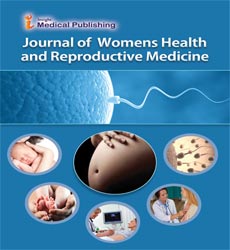Focus on Iron Over-Burden and Ferroptosis
Jonathan Than*
Department of gynecology and reproductive medicine, Saint-Pierre, France
- *Corresponding Author:
- Jonathan Than
Department of gynecology and reproductive medicine, Saint-Pierre,
France,
E-mail: Jonathan@gmail.com
Received date: November 17, 2023, Manuscript No. IPWHRM-23-18394; Editor assigned date: November 20, 2023, PreQC No. IPWHRM-23-18394 (PQ); Reviewed date: December 04, 2023, QC No. IPWHRM-23-18394; Revised date: December 11, 2023, Manuscript No. IPWHRM-23-18394 (R); Published date: December 18, 2023, DOI: 10.36648/ipwhrm.7.3.75
Citation: Than J (2023) Focus on Iron Over-Burden and Ferroptosis. J Women’s Health Reprod Med Vol.7 No.3:75
Introduction
Iron is a fundamental minor component for organic entities. Not with standing, iron over-burden, which is normal in hematological problems (for example haemochromatosis, myelodysplastic disorders, aplastic frailty, and thalassaemia, blood bonding reliant or not), can advance receptive oxygen species age and instigate ferroptosis, a clever type of customized cell demise portrayed by overabundance iron and lipid peroxidation, hence causing cell and tissue harm. Barrenness is a worldwide wellbeing concern. Late proof plays demonstrated the arising part of iron over-burden and ferroptosis in female barrenness by prompting hypogonadism, causing ovary brokenness, impeding preimplantation undeveloped organisms, lessening endometrial receptivity, and crosstalk between subfertility-related messes, for example, polycystic ovary disorder and endometriosis. What's more, stomach microbiota and their metabolites are associated with iron digestion, ferroptosis, and female barrenness. In this survey, we deliberately expand on the flow research progress in female fruitlessness with an original spotlight on iron over-burden and ferroptosis and sum up promising treatments focusing on iron over-burden and ferroptosis to recuperate richness in ladies. In outline, our review gives new bits of knowledge into female barrenness and offers writing references for the clinical administration of female fruitlessness related with iron overburden and ferroptosis, which might be useful for females with haematopoietic issues experiencing both iron over-burden and fruitlessness.
Clinical Investigation
Fruitlessness is characterized as the inability to accomplish pregnancy following a year of ordinary unprotected sexual way of behaving, and is an overall medical condition. Human propagation is a mind boggling process that incorporates gamete creation, preparation, preimplantation undeveloped turn of events, implantation, pregnancy, and birth, which are all managed by the endocrine framework. Blunders before implantation can prompt fruitlessness. Iron is fundamental for the overwhelming majority physiological cycles, including lipid digestion and cell energy age. In ongoing many years, iron supplementation has become vital to keep away from lack of iron related subfertility and maternal-fetal complexities. Nonetheless, as of late, the job of iron over-burden and ferroptosis, a sort of modified cell passing initiated by excessed iron, has been illustrated. The impacts of iron over-burden and ferroptosis on male barrenness have been very much surveyed. In females, the connection between iron over-burden and barrenness has been affirmed by clinical information. As indicated by a clinical investigation of thalassaemia, the unconstrained pregnancy rates for ladies with thalassaemia major and thalassaemia intermedia are 60% and 70%, with ordinary bonding paces of 100% and 49% , and ferritin levels of 2163 ng/dL and 910 ng/Dl individually. Serum ferritin levels during pregnancies had a critical negative relationship with estradiol, testosterone, and gonadotropins, which were all essentially higher in the unconstrained pregnancy bunch contrasted with the helped regenerative gathering. These discoveries featured the job of iron over-burden in female fruitlessness. Here, we sum up the ongoing investigations that expound on female barrenness incited by iron over-burden interceded ferroptosis. In particular, iron over-burden and ferroptosis bring about hypogonadism, ovarian harm, preimplantation embryo toxicity, constricted endometrial receptivity, and crosstalk between barrenness related issues, for example, Poly Cystic Ovary Syndrome (PCOS) and endometriosis. Also, the stomach microbiota assumes a significant part in female fruitlessness, iron digestion, and ferroptosis. We likewise sum up promising treatments, from both clinical and preclinical articles, to recuperate female ripeness, with the end goal of giving writing references to the clinical administration and focusing of female fruitlessness related with iron over-burden and ferroptosis.
Gonadal Harmfulness
This could be particularly significant for females experiencing hematological problems, in whom iron over-burden and subfertility are normal. Despite the fact that subfertility has been credited to gonadal harmfulness from treatment, barrenness likewise exists in the people who have not gotten chemo-and additionally radio-treatment. Diminishing iron levels is useful for further developing fruitfulness, showing that iron over-burden and ferroptosis are associated with fruitlessness. In any case, iron over-burden doesn't generally set off ferroptosis, while ferroptosis can likewise be prompted by different components, like cell reinforcement framework brokenness. Given iron over-burden is a fundamental arm of ferroptosis, in this way, we give new bits of knowledge into female barrenness, with an emphasis on iron over-burden intervened ferroptosis, and offer promising medicines for further developing ripeness, which could be particularly vital to females experienced hematological problems. Barrenness is an overall medical condition. Iron over-burden and ferroptosis assume an arising part in female barrenness by prompting hypogonadism, causing ovary brokenness, debilitating preimplantation undeveloped organisms, lessening endometrial receptivity, and animating crosstalk among PCOS and endometriosis. The stomach microbiota likewise assumes a possible part in the connection between iron equilibrium, ferroptosis, and richness.
Open Access Journals
- Aquaculture & Veterinary Science
- Chemistry & Chemical Sciences
- Clinical Sciences
- Engineering
- General Science
- Genetics & Molecular Biology
- Health Care & Nursing
- Immunology & Microbiology
- Materials Science
- Mathematics & Physics
- Medical Sciences
- Neurology & Psychiatry
- Oncology & Cancer Science
- Pharmaceutical Sciences
